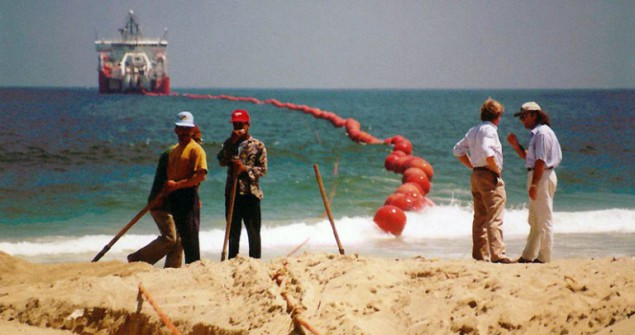
US engineers have identified a problem nobody had ever expected to confront so soon: the approach of the flooded internet, caused by worldwide sea level rise. Within 15 years sea water could be lapping over buried fibre-optic cables in New York, Seattle, Miami and other US coastal cities, according to a new study.
The consequences for global communications are unknown. But, as the glaciers melt, and the water in the oceans continues to expand as temperatures rise, the chances of urban flooding will increase.
And that means water where nobody expected it – over buried cables, data centres, traffic exchanges, termination points and other nerve centres of the physical internet, according to a team from the University of Wisconsin-Madison and the University of Oregon, US.
“Most of the damage that’s going to be done in the next 100 years will be done sooner than later,” said Paul Barford, the computer scientist who led the study and presented it to a meeting of network scientists. “That surprised us. The expectation was we’d have 50 years to plan for it. We don’t have 50 years.”
In fact, such buried infrastructure is usually sheathed in water-resistant protection, but water-resistant is not the same as waterproof. And while submarine cables are fashioned to withstand extended seawater corrosion and pressure, urban services don’t have quite the same level of future-proofing.
But city managers already have the awful lessons of massive flooding in New York from Superstorm Sandy, or of New Orleans from Hurricane Katrina, or of Houston from Hurricane Harvey.
The message from climate science for the last five years has been simple: expect more coastal flooding.
The US scientists looked only at the challenges for the US. They calculate that by 2033 an estimated 4000 miles (6400 km) of buried fibre-optic conduit will be under water. More than 1100 traffic hubs – internet exchange points that handle massive quantities of information at colossal speeds – will be surrounded by water.
Many of the conduits at risk are already at or near sea level, and only a very slight further rise could bring extra risk, especially at those places where the submarine cables come ashore.
“The landing points are all going to be underwater in a short period of time,” Barford believes. “The first instinct will be to harden the infrastructure. But keeping the sea at bay is hard. We can probably buy a little time, but in the long run it’s just not going to be effective.”
And, he told academics and industry scientists at an Applied Network Research Workshop: “This is a wake-up call. We need to be thinking about how to address this issue.”
- This article first appeared at Climate News Network.



